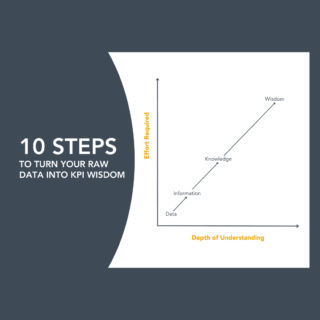Successful execution depends on more than the annual strategic planning event. Strive to make your strategy “dust-free”.
If you want your investment in strategic planning to be a catalyst for success, you need to stop thinking of planning as an annual event and instead embed the strategic planning process into your organization’s culture and day-to-day habits.
Charles Duhigg wrote in The Power of Habit, my favourite non-fiction book I read this year, that the golden rule of habit change is that you can’t extinguish a bad habit, you can only change it. So if you invested a bunch of time, money and expertise in developing a strategy and now find yourself frustrated with execution, it is time to examine your strategic planning habits.
“Most of what we do everyday may feel like the products of well-considered decision-making, but they’re not,” Mr. Duhigg writes, “They’re habits.” So let’s apply this scientific thinking to making strategy a habit. Strategy is usually set by identifying where we are now and then articulating where we want to be in the future. We then have to become clear on what stands in between and choose an approach and a course of action to make the journey successful. If you think about it, getting from here to there usually involves considerable change, and that means you are banging up against established workplace habits.
Executive leaders are not immune; sometimes they are the biggest culprits of being stuck in existing habits and thus impacting the organization’s ability to move to execution. So leading by example is a good place to start.
What habit do you want to change?
First look at how your executive uses your organization’s strategy. Do you look at it once a year, once a quarter, once a month? If you want to successfully execute, how often do you think you need to use it? The iterative process of strategy suggests that the more it is part of your culture and day-to-day activities, the more likely you are to execute successfully.
Start with a reality check, and examine your existing habits:
- How do you communicate your strategy?
- How do you create buy-in for it?
- How do you measure your progress?
- How do you stay flexible in achieving the goals?
- How do you remain disciplined and not chase shiny objects?
Next, pick one change in how you use it that will have the most initial impact. Then decide how to change your current bad habit into a good one.
Heidi Halvorson, Phd wrote in Psychology Today about 3 proven ways to change a habit.. She suggests you break a bad habit in the following ways:
- Getting specific, very specific about what you want to achieve
- Embrace the fact that it is going to be hard
- Will power is like a muscle. Plan what you will do when it gets tired.
If you can begin to intentionally identify your leaders’ bad habits around how they use (or don’t use) strategy, you can change them to improve how your whole organization uses strategy to achieve exceptional execution. And then maybe you’ll have one less book to dust on your boardroom shelf.
Louise Watson is President of Adura Strategy in Vancouver, BC, Canada. For more information, visit www.adurastrategy.com


